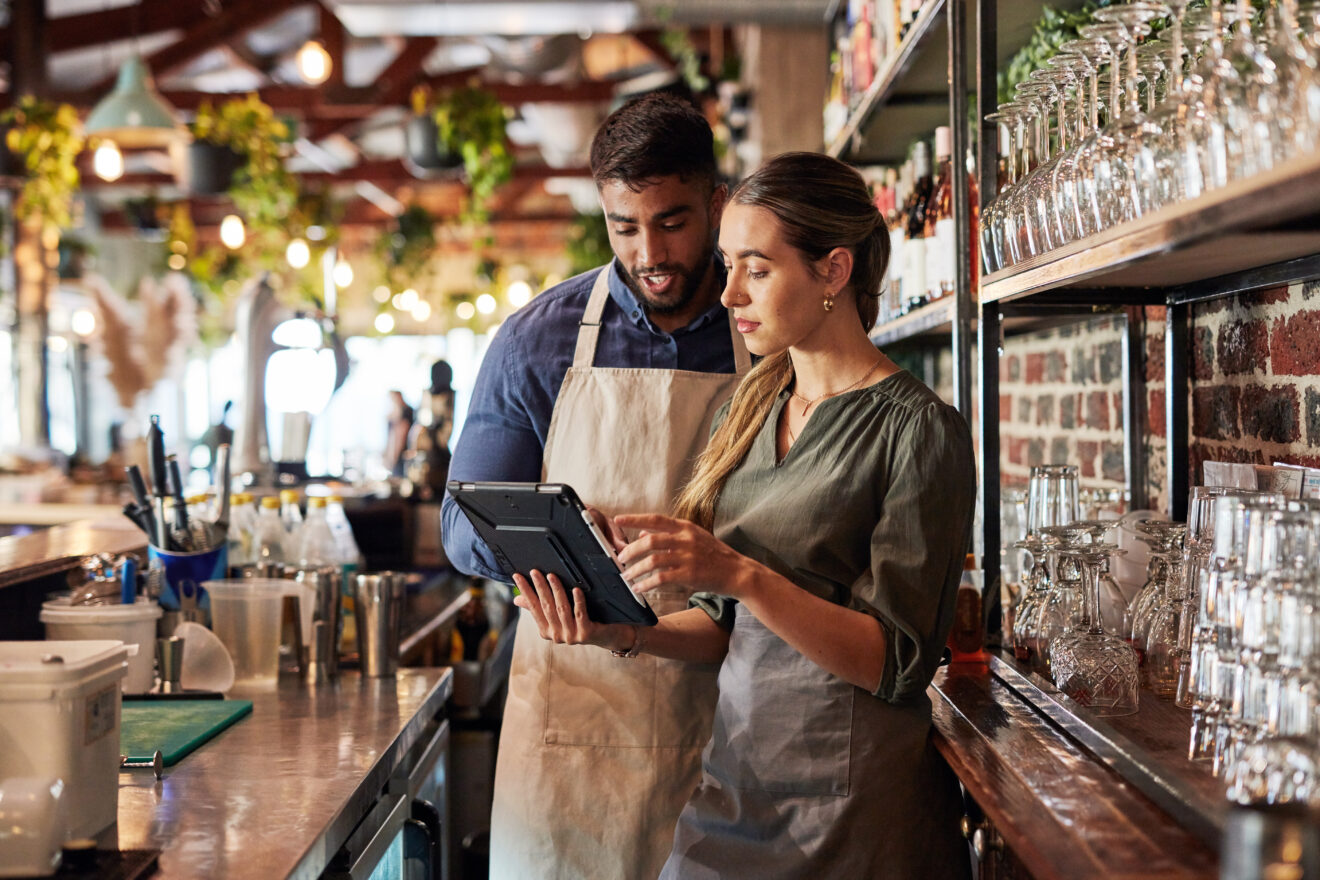The pandemic caused wide-scale change in the restaurant industry – especially in terms of adoption and innovations in technology.
“The pandemic accelerated operator technology utilization and consumer comfort with using technology in the restaurant experience,” said Hudson Riehle, senior vice president of research for the National Restaurant Association. “Looking ahead, that rapidity of change will continue to be a constant.”
A majority – 76% – of foodservice operators believe that using technology allows them to be competitive while also acknowledging that their business could be more up-to-date on tech innovations, according to the National Restaurant Association’s recently released Restaurant Technology Landscape Report 2024.
While the industry is rightly focusing its attention and efforts on tech, businesses and customers are also expressing that not every part of dining out absolutely necessitates tech-enabled experiences. The report outlines how restaurant technology is separated into three types: must-have, want-to-have and nice-to-have technology, which then fit into three restaurant occasions: delivery, limited-service and full-service.
“It’s clear from the research in this report that an operator’s tech integration must closely align with their segment, type of operation and both current and future customer demographics,” Riehle shared.
Full-service eateries don’t need high-tech tools
Technology advancements are coming into full-service businesses – 65% of customers would like tablets to be available on tables for digital payments, and 60% would use the devices for ordering. However, customers are not anticipating technology to take over other roles during a restaurant experience. Only 29% of adults are interested in food created by automation or robots and 37% would order food to be delivered to them by robotics.
Sixty-four percent of customers would choose traditional employee service in a full-service restaurant over a business that incorporates technology into the dining experience. So while ordering and payment technology would be used by restaurant patrons at a full-service establishment, the tools aren’t necessary for operators to adopt. Only 27% of these operators plan to invest in developing a smartphone app this year, showing that these features are nice to have, but they are not a necessity.
Limited-service restaurants want options
Quickservice brands are finding operational efficiencies when adopting technologies such as QR code-enabled menus and payment options or self-service kiosks for ordering and paying. Consumers reported a high desire to use these tools because of the ease of ordering, quickness of food arrival, ability to have more detailed information about menu items and speed of pickup orders. Forty percent of limited-service operators say they are spending resources on the development of smartphone apps in 2024 in order to capitalize on these opportunities.
Customers are expecting these tech–assisted experiences while at limited-service restaurants, but they are still looking to interact with humans for many tasks. Only 30% of adults reported that they would want their food to be made by automated systems, and about a third said they would order from an AI-generated person via video. And while technology is creating efficiencies, when choosing between a tech-enabled limited-service restaurant and a quickservice eatery without tech, 62% of customers said they would prefer the restaurant with traditional employee service.
Food delivery tech is essential
Restaurants offering food delivery overwhelmingly have embraced technology-based solutions because adult customers have come to expect using these tools during the delivery process.
More than 80% of customers report that they would make a delivery order from a restaurant’s own website or from a mobile app while 71% said they would use third-party platforms to order food for delivery. Also, 79% and 73% said they would use a mobile payment or digital wallet, respectively, to pay for their order. These figures demonstrate the need for operators to keep pace with these restaurant technologies; consumers are anticipating that they will encounter these features in order to ease restaurant deliveries.
But, far fewer adults report that they are likely to make delivery orders via voice-enabled AI or would want food delivered via drones or robots – 45%, 37% and 36%, respectively. And 45% of customers also reported that they wish delivery tech would stay about the same in the future instead of growing or lessening. So, only 16% of operators reported they intend to devote resources to AI solutions this year.
Behind the scenes
In all categories of foodservice, operators should be focused on updating and implementing effective digital ordering and payment systems that meet consumers’ expectations “as the data is quite clear that this is currently [customers’] highest priority,’ said Riehle.
However, many restaurant technology efforts are related to other operational functions. According to the report, foodservice businesses’ top tech investments include digital marketing, loyalty and reward programs, administrative systems, inventory management, point-of-sale systems, labor management tools and cybersecurity.
“These systems are equally as important to finding operation efficiencies, even though not always visible to the customer base,” added Riehle.
Forty-seven percent of operators shared that they believe restaurant technology integration and automation are going to become more common. These innovations will continue to help aid employees in their job functions and support operators during labor shortages.
“Restaurant operators have tremendous entrepreneurial spirit, and they are constantly innovating – sometimes through new dishes or flavors, and sometimes through new business practices,” said Michelle Korsmo, the National Restaurant Association’s president and CEO in a statement. “[O]ur research on the technology landscape in restaurants provides insights on consumer expectations that operators need to confidently evaluate their tech investment.”
Recent related stories:
- Who is really using grocery technology?
- Restaurant ordering in the age of voice AI
- How eatertainment restaurants are transforming dining
_____________________________________
If you liked this article, sign up to receive one of SmartBrief’s Food & Beverage newsletters. They are among SmartBrief’s more than 250 industry-focused newsletters.
